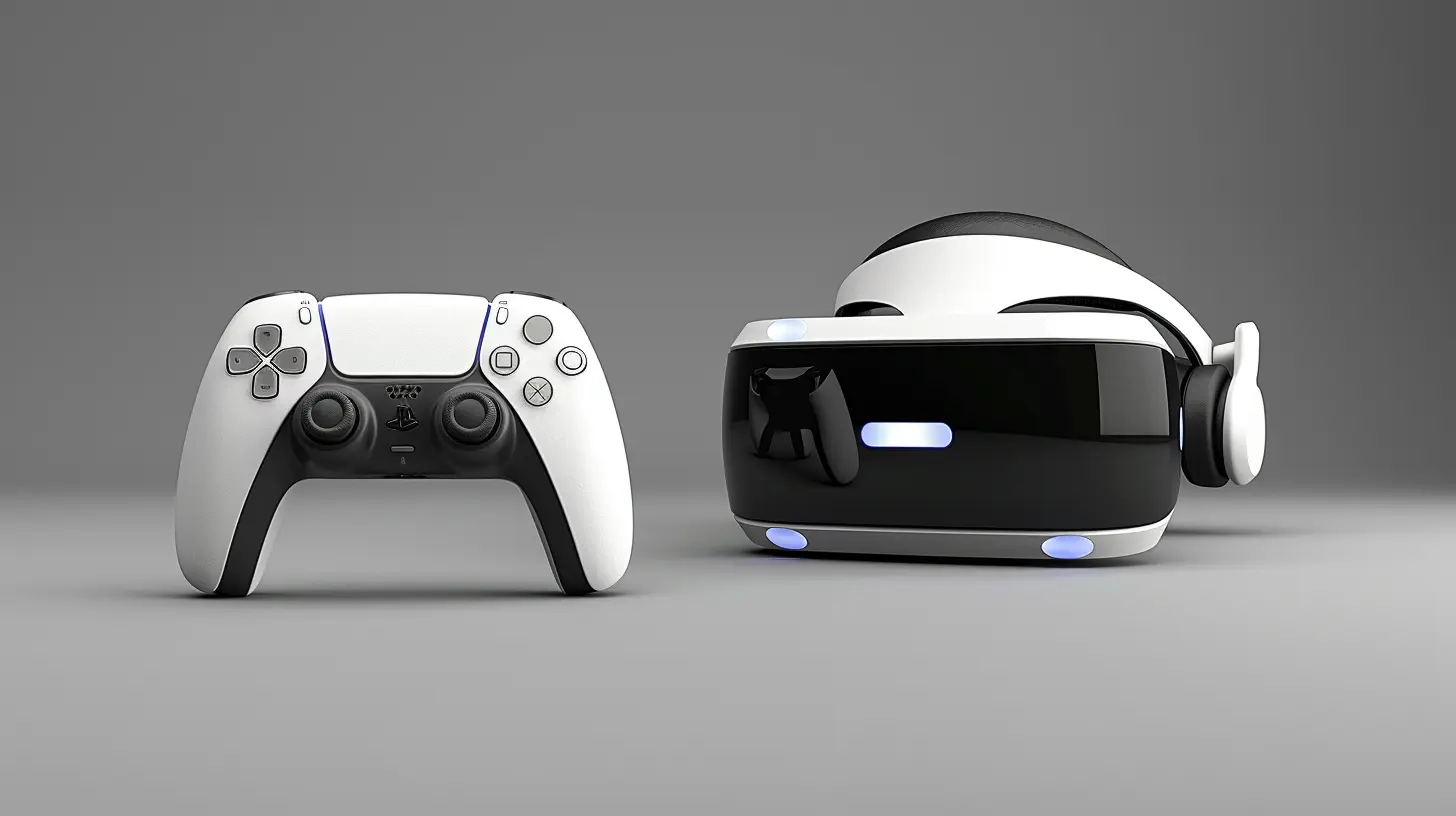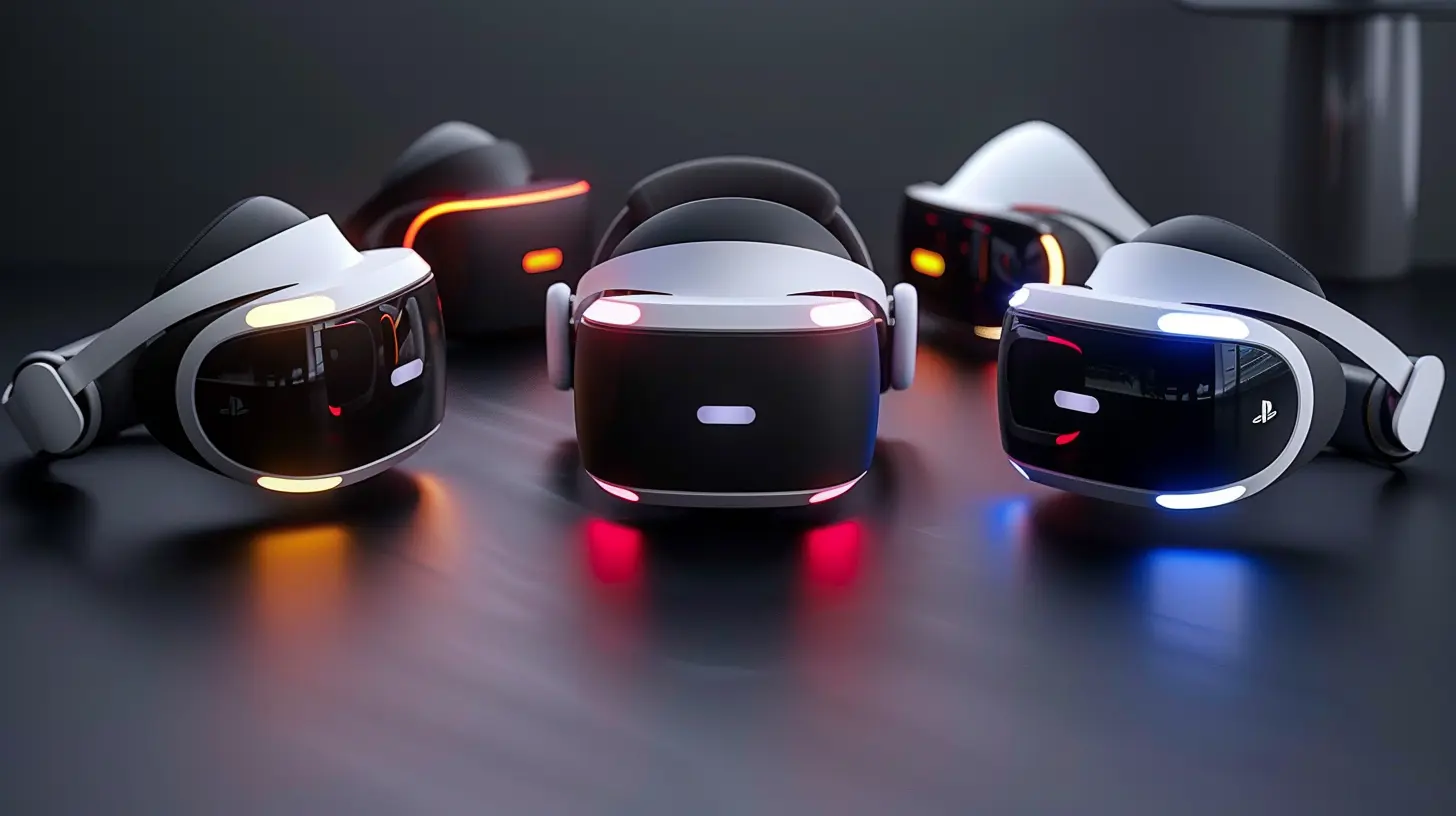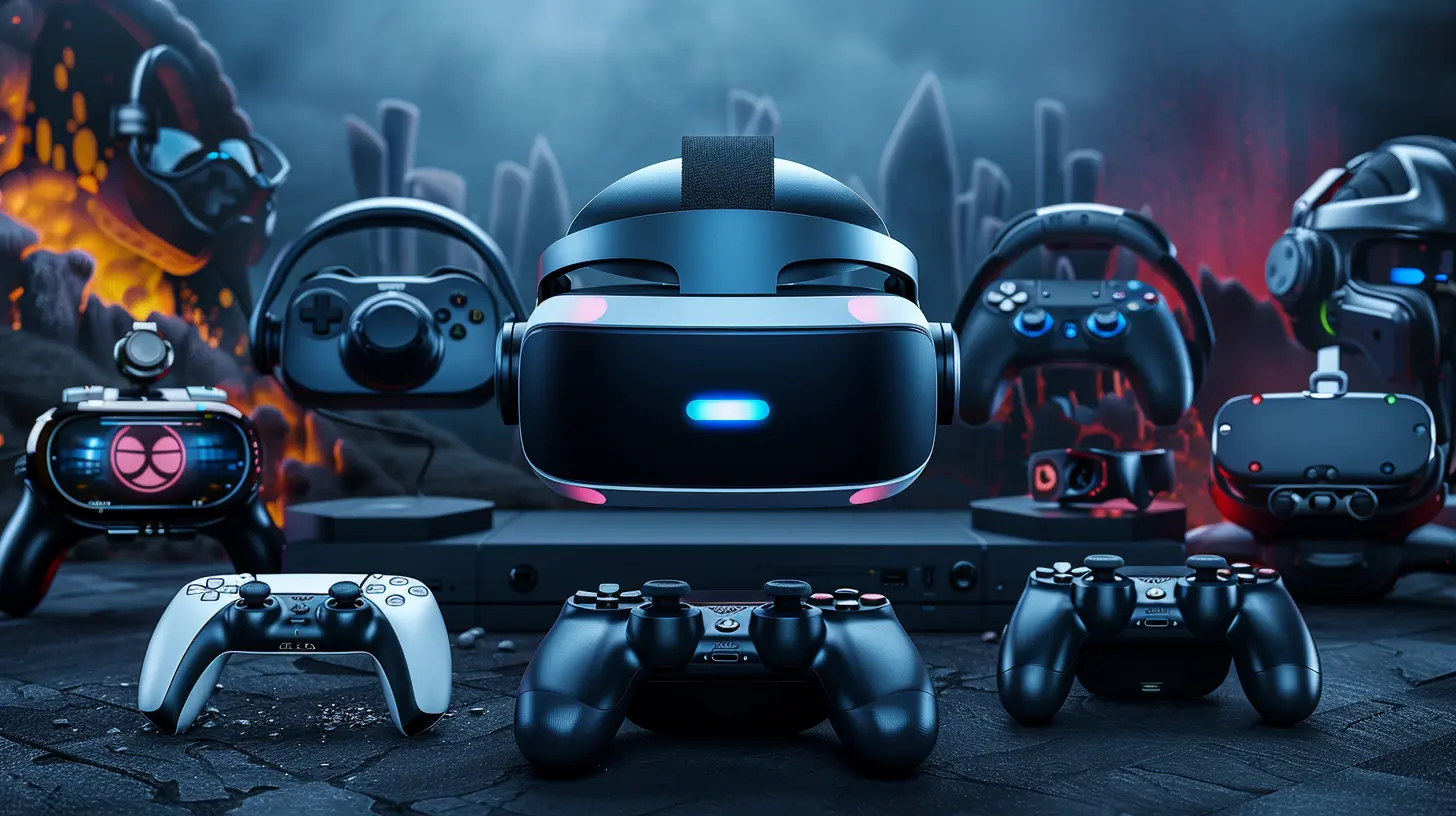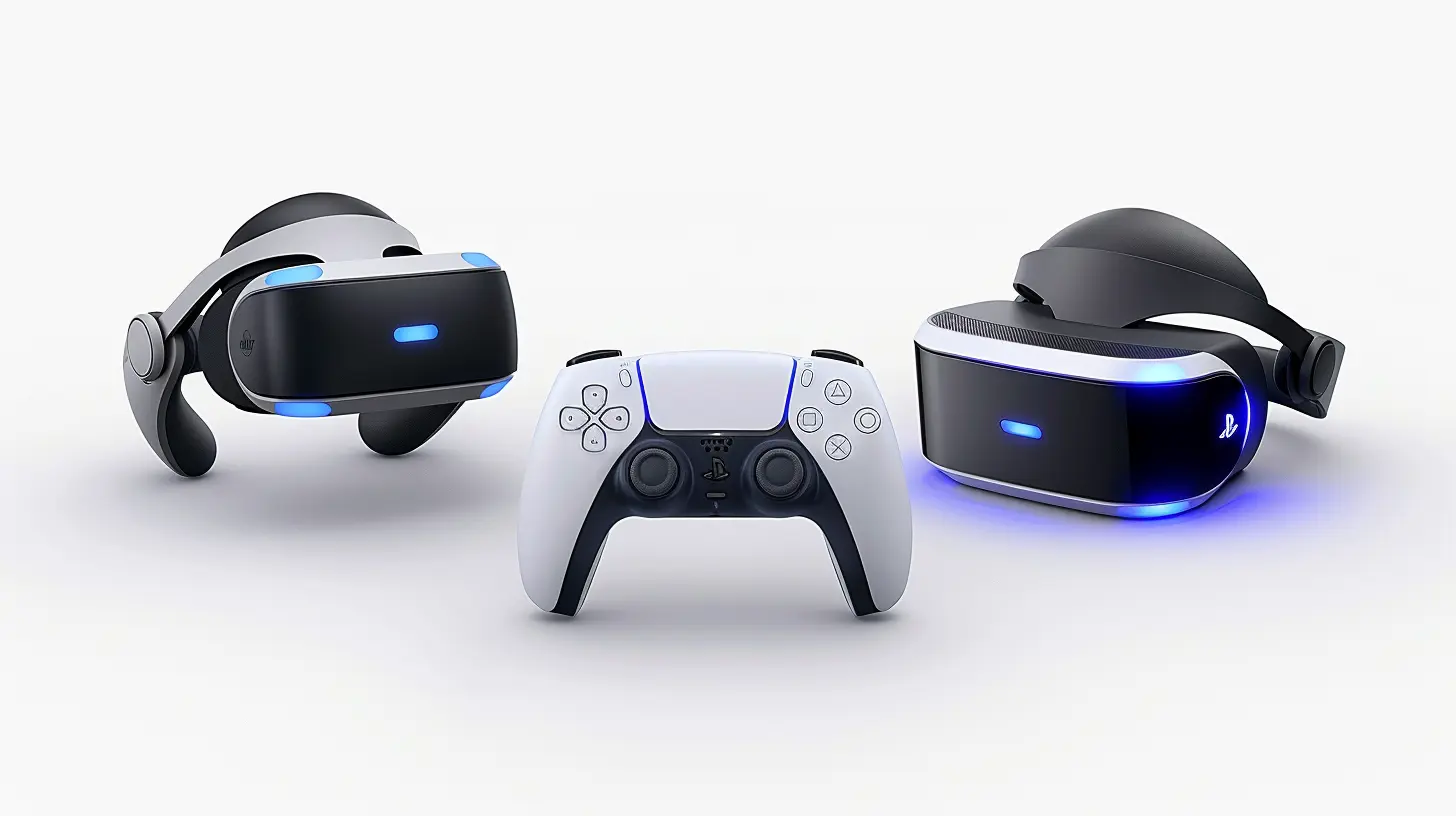Understanding VR Integration on Modern Consoles
14 August 2025
Alright, let’s talk about something that’s been brewing in the gaming world for a while now—Virtual Reality (VR). Specifically, how it’s carving its place into the cozy living rooms of console gamers. VR used to be this futuristic concept that most of us associated with sci-fi movies or clunky, experimental hardware, right? Fast forward to today, and boom—VR has stepped out of its niche shell and is becoming a real, playable reality on your favorite consoles.
So, how exactly is VR blending into our everyday console gaming experiences, and what should you know about it? Let’s dive into the immersive world of VR integration on modern consoles and unpack everything, piece by piece.
Gaming Beyond the Screen: What Is VR in Console Terms?
You probably already know what VR is—those snazzy headsets that wrap around your face and transport you to other worlds. But what does “VR integration on modern consoles” actually mean?In simple terms, it’s about your Xbox, PlayStation, or even Nintendo Switch working in sync with VR hardware to offer immersive gaming experiences. Instead of just watching the action unfold on your TV, you’re in the action—dodging bullets, swinging swords, and gawking at fantastical landscapes as if they were real.
This tech isn’t only for PC elitists anymore. We’re seeing a push to bring it straight to console gamers who crave more depth (literally and figuratively) from their adventures.
The Evolution: VR’s Journey Into the Console Space
Let’s go a bit back in time. Console gaming and VR didn’t always get along. Early experimentation was limited, clunky, and often... well, kinda lame. Remember those weird ‘90s attempts? Yeah, we try to forget them too.But things really took a turn when Sony launched the original PlayStation VR (PSVR) for the PS4 in 2016. That was a massive leap. It wasn’t perfect, but it showed us that mainstream console-based VR was not only possible—it was actually fun.
From there, things snowballed.
- PSVR 2 was announced for the PlayStation 5 and made jaws drop with its advanced specs—OLED displays, eye-tracking, haptic feedback, you name it.
- Xbox (while not having its own VR headset yet) is dipping its toes into the waters by ensuring compatibility with third-party VR systems through cloud services and game development support.
- Nintendo, being Nintendo, plays it differently. They kept things simple with the Labo VR Kit—more toy than tech, but still a unique flavor of console-based VR.
How Does VR Actually Integrate With Consoles?
Now let’s get into the nitty-gritty. What makes a console ready for VR? Well, there are a few key elements at play:1. Hardware Support
Modern consoles like the PS5 are built way tougher and smarter than their predecessors. We're talking about GPU and CPU power that can handle complex rendering in real-time, which is essential when you’ve got two high-resolution screens (one for each eye) strapped to your head.Without strong hardware, you'd be dealing with laggy frame rates—and trust me, nothing kills the VR vibe like motion sickness. The PS5, for instance, is a beast when it comes to VR readiness.
2. Custom Designed Peripherals
You can’t just connect a VR headset and hope for the best. Integration means designing headsets and controllers meant to work seamlessly with the console. That includes features like:- Adaptive triggers
- Haptic feedback
- Integrated audio
- Motion tracking
The PlayStation VR2 exemplifies this with its purpose-built Sense controllers and built-in eye tracking.
3. Platform-Specific Software
The games themselves have to be tailor-made or optimized for VR. This isn’t a one-size-fits-all scenario. Console developers often create VR-specific titles or VR modes within mainstream games.Think of it like this—traditional games are like TV shows. VR games? They're live theater. Same story, different experience.
What Are the Benefits of Console VR?
Okay, so why should you, an average gamer who might already be happy with a solid controller and HDTV, care about all this VR fuss?🧠 Immersion Like Never Before
When done well, VR delivers a level of immersion that’s just unmatched. You’re not watching the game—you’re in it. And with great storytelling and game design, the emotional payoff hits harder.🕹️ New Ways to Play
VR opens up genres you never considered before. Ever tried rhythm games in VR? It’s like your body becomes the controller (hello, Beat Saber). Horror games suddenly become terrifying. Racing games? You actually feel like you're in the car.🎮 No PC Headache
Let’s be honest. Setting up VR on a PC can be intimidating. Drivers, configurations, cables galore. With console VR, the plug-and-play experience is a massive win. No tech degree needed—just plug it in, power it up, and off you go.What Are the Shortcomings?
It’s not all rainbows and high scores, though. There are some hurdles console VR still has to overcome.1. Limited Game Library
While the catalog is growing, we’re still not quite at the point where you can play every type of game in VR. If you’re expecting to dive into your favorite AAA game in virtual reality, chances are, you’ll be waiting a bit.2. Price Tag Shock
VR headsets don’t come cheap. Even when bundled with a console, you're probably looking at a setup north of $1,000. That’s a big pill to swallow when your old TV-and-controller routine works just fine.3. Space & Comfort
Not everyone has a giant living room. VR needs space—both physically and mentally. You’ll be flailing your arms around, ducking, jumping. Plus, wearing a headset for hours? Not always super comfy.The Best VR Experiences on Consoles (So Far)
Here’s a sweet spot for anyone wondering what games are already making waves in the console VR arena. These top picks are setting the standard:- Astro Bot Rescue Mission (PSVR): Adorable, clever, and made from the ground up with VR in mind.
- Resident Evil Village VR Mode (PSVR2): What’s scarier than Lady Dimitrescu in 4K? How about her towering over you in full VR?
- Gran Turismo 7 VR: For racing fans, this is as real as it gets.
- Moss: A storybook-like adventure with a tiny mouse that tugs at your heart while still flexing the best of VR.
These games not only show off what VR can do—they show what console VR can do without compromising on quality or performance.
What’s on the Horizon for Console VR?
The future looks promising. Sony is committed to pushing VR further with more dedicated first-party titles. Indie developers are hopping on board too, experimenting with creative mechanics only VR allows.We might even see Xbox finally throw its hat into the ring with a dedicated headset, especially as cloud gaming becomes more viable. And with AI and machine learning evolving, VR NPCs could start acting so real you'll forget they’re virtual.
VR might even bleed into non-gaming areas on consoles—movies, live sports, virtual gatherings. Who’s to say your next Netflix binge won’t be in a cozy virtual theater?
Should You Jump Into Console VR?
Here’s the million-dollar question: is it worth it?If you're a hardcore gamer who thrives on new experiences, console VR is a no-brainer. It’s fresh, exciting, and constantly evolving. If you're more casual, it might be worth waiting for more content, lower prices, or even lighter, more comfortable headsets.
But here’s the truth—VR on consoles is no longer a side hustle. It’s becoming part of the main game plan, and you might want to buckle up for the ride. It’s not just the next step in gaming—it’s a whole new dimension.
Wrapping It Up
So now you’ve got the lowdown on VR integration on modern consoles. We’ve gone from clunky, cartoonish tech to slick, jaw-dropping immersion that fits right into your PlayStation or (hopefully soon) your Xbox. The future of VR isn’t just a PC player’s playground anymore—it’s in our consoles, it’s in our homes, and it’s only getting better.Whether you’re already deep in the VR game or just peeking through the window with curiosity, one thing’s for sure—the line between virtual and reality is officially blurred. And honestly? It’s pretty epic.
all images in this post were generated using AI tools
Category:
Gaming ConsolesAuthor:

Whitman Adams
Discussion
rate this article
2 comments
Maggie Mahoney
Exciting insights on VR advancements!
December 20, 2025 at 5:32 AM
Azriel Newman
This article offers valuable insights into the evolving landscape of VR integration on modern consoles. The analysis highlights key advancements and potential future developments, making it a must-read for gamers and industry enthusiasts interested in the future of immersive experiences. Great work!
August 19, 2025 at 4:14 AM

Whitman Adams
Thank you for your kind words! I'm glad you found the insights valuable and relevant to the evolving VR landscape. Happy gaming!


